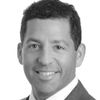Admittedly, I am an endurance athletics junkie. Who else would celebrate their 50th birthday by swimming the Catalina Channel as I did at the end of last summer? After finishing the Ironman Los Cabos a year ago I started training for the Open Water Triple Crown.
But as my coach Terry Kerrigan reminds me, change is inevitable and the body's ability to cope with the stresses of year-round Ironman training alter in mid-life. Ultimately I accepted that it was time to change course after years of long-distance training and racing. Switching to a sprinter mentality and training regimen was a better lifestyle solution and would better prepare my middle-aged body for what lies ahead.
The transition has been a mental and physical challenge. Short and intense are my workouts, my physique has changed from placekicker to linebacker, and on the bright side, I no longer need to nap in the middle of the day.
In the investment realm, it may be time for investors to change course as well. Nine of 10 of the G10 Central Banks are devaluing their currencies and buying bonds, creating trillions of Euros and Yen worth of negative interest rates to stimulate economic growth. This discourages saving and encourages lending and risk-taking, but also makes it harder for savers to produce cash flow from traditional sources. The U.S. is the lone wolf, talking up an economy that has warmed up enough -- with 5.5 percent unemployment and about 80 percent capacity utilization -- to presage inflation and merit higher interest rates.
As a wealth manager, my firm's long-term objective is still to help our clients' preserve capital and satisfy lifestyle objectives, but also provide enough growth to counter inflation and meet longer term objectives. For instance, we work with many professional athletes who may have 40 or 50-year retirements. Growth is a key objective after their pro careers.
However, after years of low volatility and above-average stock market returns, the era of complacency is over. In addition, erstwhile stewards of capital like hedge funds are producing less alpha (excess return) and more volatility than before.
After decades of looking at conventional solutions, my partners and I are uncovering and analyzing alternative sources of total return to replace the orthodox. Investments such as reinsurance, healthcare royalties, venture debt and agricultural finance replace traditional private equity, global macro and event-driven funds. These newer strategies require more time to analyze and explain the risks, but can provide cash flow and total return without incremental stock market exposure.
Transitions, particularly big ones, can be tough. I envy the athlete who can age up and compete in his or her 50s, 60s or 70s. For me, time-consuming endurance sports, while very rewarding, no longer make sense in light of family, business and health requirements. The body and lifestyle stresses at age 50 are more difficult to absorb, so if I want to remain fit and competitive, I need to adapt to a new way of thinking and training. It is tough for me to follow and watch an Ironman race without pining for the starting line, but I know if I focus on the plan, I will be stronger and healthier for it.
Likewise, there is a sea change going on in global markets that demands alertness and extra attention in investment planning. Nearly seven years after the credit crisis and the beginning of the global zero interest rate policy, distortions abound and at least one Central Bank (the US Fed), has stopped purchasing bonds and is prepared to raise overnight rates, causing increased market volatility.
Change may be scary at first, but goal-oriented athletes and investors must keep their eyes on the finish line. In times of transition, when things heat up, having a cogent plan while understanding the risks and merits of alternative methods can lead to better long-term health and success.
